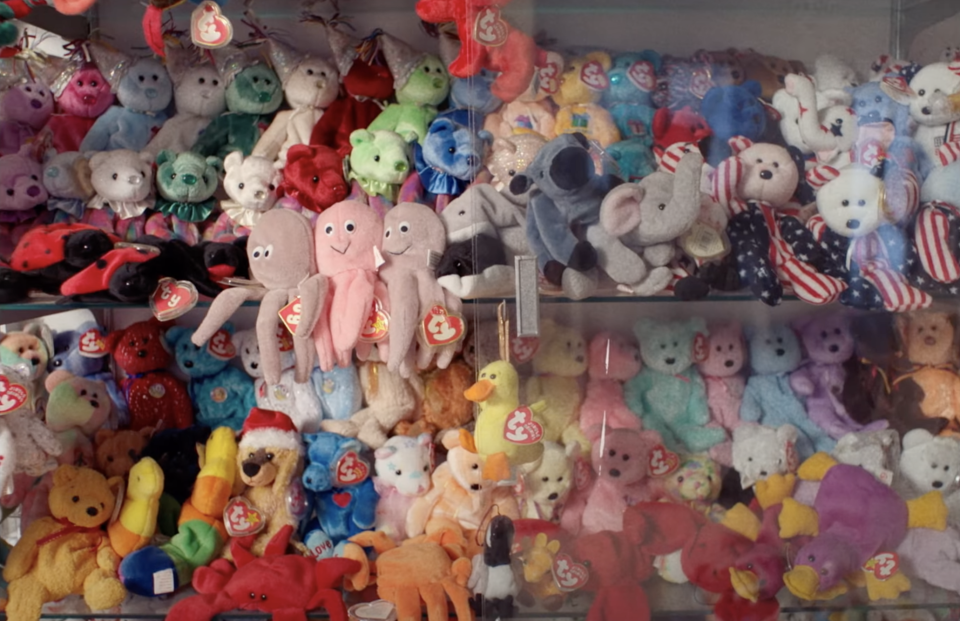25 years later, HBO Max’s ‘Beanie Mania’ asks why we were so obsessed with Beanie Babies
Buried in the drawers of an old dented filing cabinet in the back corner of my parents’ garage is what my mom used to earnestly refer to as her back-up plan for my future.
She wasn’t alone in thinking the hundreds of dollars and months of diligent hustle would somehow morph into a financial nest egg. Hundreds of thousands of parents — moms, in particular — had the same dream when they spent the better part of the back half of the 1990s furiously collecting Beanie Babies, the bean-filled cuddly animals that became one of the most popular toys of all time. Pigs, snakes, lizards, bears, lions, dogs, cats, rats, elephants, ghosts, sentient pumpkins and everything in between. No corner of the animal kingdom or supernatural realm went unexploited by Beanie Babies.
Like my mom, many parents still squirrel away their curated collections in case their value skyrockets and the unfulfilled promise of a financial windfall comes back around.

But in 2021, these bean bag bounties are, more realistically, just lingering vestiges of the last gasps of 20th century consumer culture collecting dust rather than value.
I’m resurrecting our collective memory – or dread – of Beanie Babies after watching HBO Max’s new documentary film “Beanie Mania” (premiering Dec. 23), which charts the origins of the phenomenon as a hobby for bored suburban Chicago moms all the way through its rapid evolution into a fleeting national frenzy.
Personally, I was all in on the Beanies as a 6- to 9-year-old. The hunt for them was the way my mom and I found a common goal with 28 years between us. I sought them as a toy, she sought them as an investment. But we both understood each other’s pursuit. Like real-life, hold-them-in-your-hands Pokemon, you had to collect them all – or at least try your hardest – to be a real player in the craze.
Twenty-five years after they first hit the market in 1996, the documentary cheekily opens the door to the other side of that craze, showcasing its chief players and why many now see it as a capitalist scheme. It makes the case that creator Ty Warner, who branded each Beanie Baby with his name on a heart-shaped tag pierced through their ears, was a master at consumer marketing and manipulation.
He created demand and then flooded the market with more than 250 varieties of his creation. He selectively partnered with companies – McDonalds, most famously – for new variations and threatened to rip away the country’s new toy addiction just as interest was waning, an ingenious move that inspired yet another wave of buying. Unfortunately, the infamously private Warner does not appear in the documentary with the other talking heads to work through this consumer reckoning.

 Yahoo Autos
Yahoo Autos 